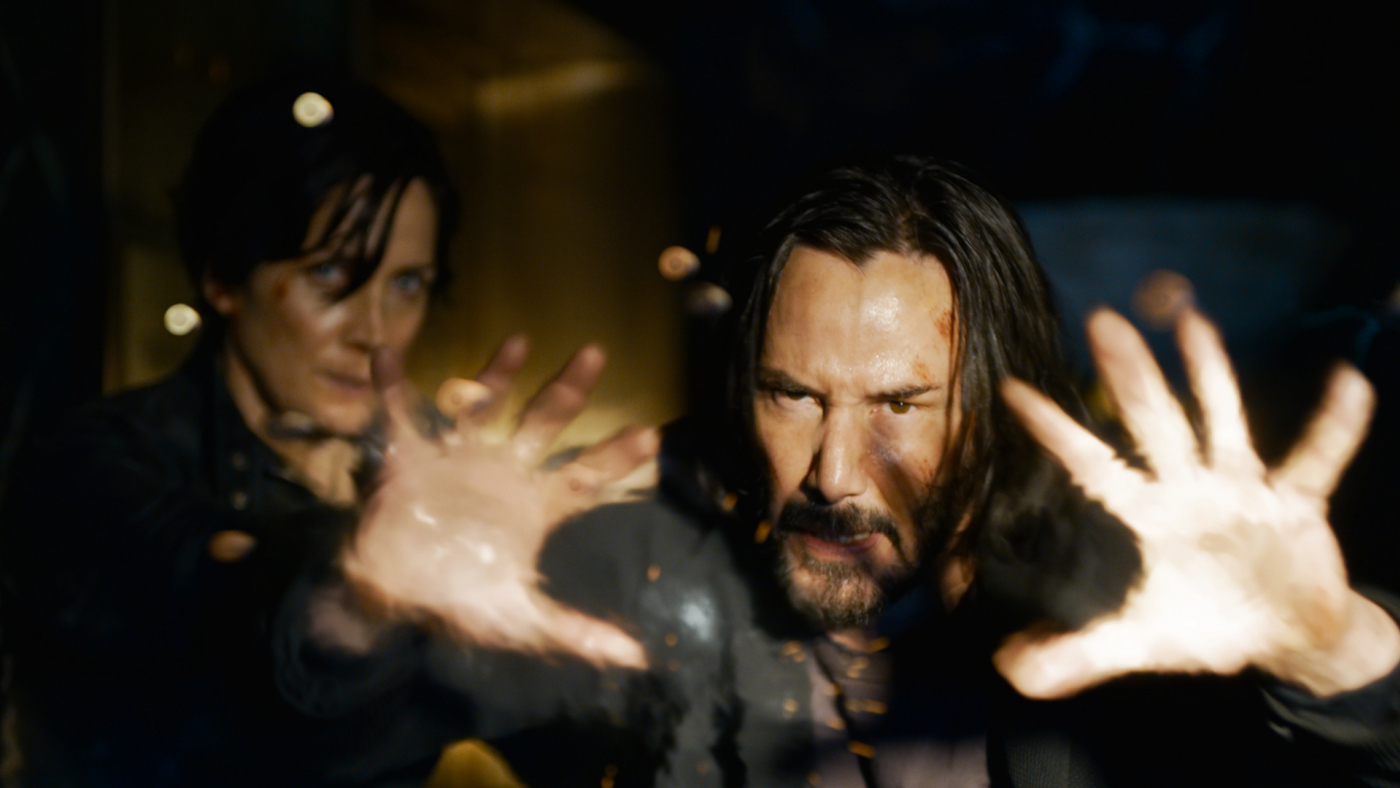
Framestore worked on “The Matrix Resurrections”, the fourth installment of the “Matrix” trilogy. Directed by Lana Wachowski, this long-awaited new chapter in the franchise reunites some of the original cast of “The Matrix”, and also welcomes some new faces. Keanu Reeves and Carrie-Anne Moss reprise their roles as Neo and Trinity, and take on new challenges in their quest for truth and freedom from reality simulation.
The Framestore team was tasked with honoring the style of the first three films, while bringing in fantastic new VFX elements in a cohesive mix of live action stunts and CGI art.
“The third act of the film is usually the scene of the biggest action sequences, as the plot reaches its final point,” explains Graham Page, visual effects supervisor. Framestore’s talented artists have used everything from digital dubbing to stunts to environmental work to produce a film with the same visual impact as the original trilogy.
Originally offered 204 shots, Framestore’s London-based team ended up delivering 443 shots for the film. “These are iconic sci-fi and action films, and everyone wants to say they worked on one of them – so much so that many artists volunteered to work on just one shot, just so they could say they worked on a ‘Matrix’ film,” explains Graham Page.
Revisiting classic effects
“There was a lot of expectation that we would build on and improve upon the visual effects of the previous films in the franchise, which were known for their groundbreaking digital effects,” says Graham Page. In some cases, Framestore used modern techniques to reference and reconstruct effects from the original films, such as Neo’s famous shield, first seen in “Matrix Reloaded.
The transformation of Agent Smith, played by Jonathan Groff, is reminiscent of the early films starring Hugo Weaving. “The 2D morphing effects have been revisited using modern 3D morphing of digital characters with hair and fabric,” says Graham Page. “In general, the mood of the film was less stylized and more organic and realistic than the originals, which meant the models had to be more detailed, and the work was done in 4k.”
Jumps and swarms
The “Matrix” trilogy was known for its spectacular stunts, so for this latest incarnation, the stakes were already high. The loyal fan base expects high intensity action and visually stunning stunts. Visual effects have come a long way since the first “Matrix” in 1999, and fans know it. So the bar was set very high for the big action sequences.
In the third act of the film, a swarm of people chase Neo and Trinity as they speed through the streets of San Francisco on a motorcycle. This climactic sequence required the addition of a crowd of up to 100 digital characters in hundreds of shots. Framestore created fully digital humans with simulated clothing, hair and facial animations, as well as digital doubles for Neo and Trinity for the motorcycle sections that were too dangerous to be shot on camera. “The talented “Matrix” team tried to do as many of the stunts as possible in person,” explains Page, “but the swarm sequence in particular was too dangerous, so we supplemented with VFX to blend in with the filmed footage and create an action-packed final shot.”
“For safety reasons, the film crew couldn’t capture the extras near the vehicles or camera, so we knew our extras would be in the foreground and the movement had to be consistent with the extras they had already filmed,” adds animation supervisor Max Solomon.
“We started by analyzing the sequence and creating a detailed list of actions we would need – some were generic, but many were shot-specific. We found four stunt actors of different sizes and set up the Framestore motion capture rigs in the largest space in our London studio. We spent two days working through the action list, capturing every variation we could think of, throwing ourselves around like kids at play! It was a lot of fun.”
After motion capture, the animation team had to look at each frame of the reference sequence and make their choices for cleanup. “We spent about two months with a team of six animators creating a library of performances with classic names like “AgitatedBystanders001,” “ShotOnRoofOfCar002,” and “MenacingWalk003,” tweaking ground contacts, correcting joint chain pops, adding hand and finger animation, and fixing scaling and intersection issues,” Max Solomon explains. “A lot of the performance was captured with all four stunt actors together, so we could get more complex interactions and integrations.”

